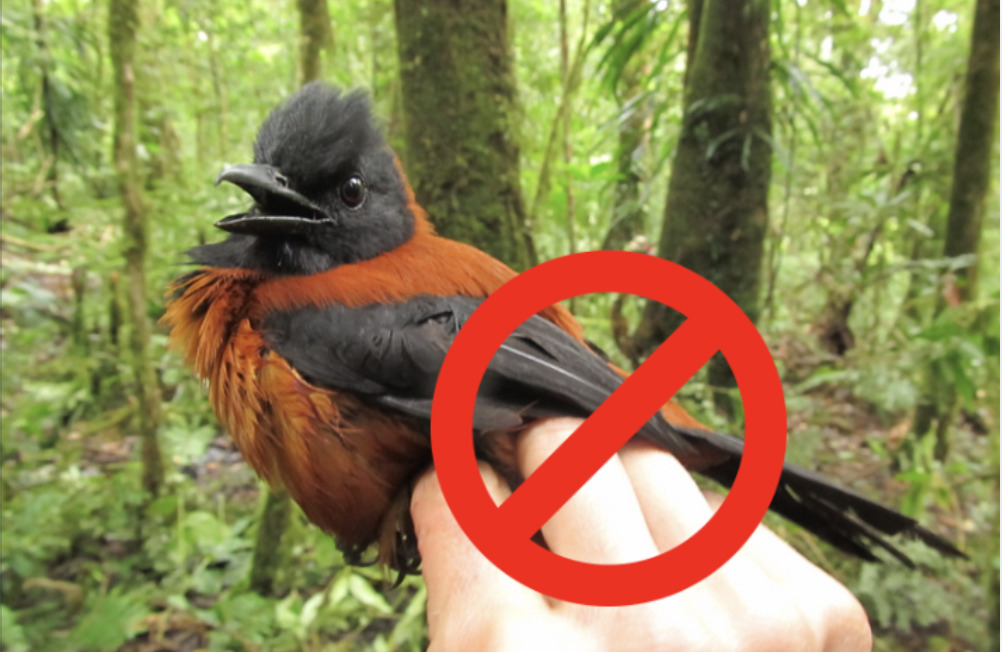1. A Cute Little Death Trap in Feathers

At first glance, the pitohui looks like your average backyard songbird. It’s got warm, rusty-orange feathers, a sleek black head, and a size so unremarkable you’d barely give it a second look. But this unassuming bird is hiding a shocking secret… Its body is laced with one of the deadliest natural toxins on Earth. If you so much as touch it, your fingers could start burning, tingling, or even going numb.
That’s because this deceptively sweet-looking bird is coated in batrachotoxin—the same lethal poison found in Colombian poison dart frogs. In high doses, this toxin can cause paralysis, cardiac arrest, and death. So if you were thinking about rescuing a pitohui from the side of the road, you might want to reconsider. This is one of the only birds in the world that you don’t just avoid eating—you avoid handling altogether.
2. A Bird That’s Toxic to the Touch

Most birds defend themselves with sharp beaks, powerful talons, or sheer speed. The pitohui? It takes a different approach—it makes itself completely untouchable. Its feathers, skin, and even its flesh are so saturated with toxins that any predator looking for a snack gets a painful, paralyzing surprise. Even humans who’ve handled pitohuis with bare hands have reported their fingers going numb for hours.
And if you’re wondering, Could I at least eat one if I was starving?—think again. Indigenous hunters in Papua New Guinea, where the pitohui lives, have long known that this bird is more poison than protein. Those who have tried to cook one describe an intense burning sensation on their lips and tongue, a numbing effect that can last for hours, and a lingering metallic taste that no amount of chewing can erase. Nature really said: This one’s off-limits.
3. The Accidental Poison Factory

So how does a bird end up full of poison? It turns out, the pitohui isn’t born deadly—it becomes deadly. Scientists discovered that its toxicity comes from its diet, specifically the tiny, toxic beetles it eats in the wild. These beetles contain batrachotoxin, which the pitohui stores in its feathers and skin like a living chemical weapon. Essentially, this bird absorbs its own poison supply with every meal.
But here’s where it gets even weirder. Scientists believe the pitohui may not even need to be this toxic—it’s just taking advantage of the deadly chemicals in its food. That means it’s not just surviving—it’s thriving on something that would kill most other animals. If birds had superpowers, the pitohui’s would be turning beetle venom into body armor.
4. A Warning You Should Take Seriously

Nature often warns us when an animal is dangerous. Bright colors, loud calls, or striking patterns all scream, Don’t mess with me! The pitohui follows this rule perfectly. Unlike more subtle poisonous creatures, it advertises its toxicity with bold colors and a distinctive smell. Yes, smell. This bird gives off a musky, pungent odor, like a mix of rotting fruit and chemical fumes, making sure anything with a nose knows to back off.
Even other animals seem to get the memo. Predators that attempt to eat a pitohui quickly spit it out, shaking their heads and gagging as the toxins kick in. Birds of prey, which usually have no problem swallowing small songbirds whole, will actively avoid pitohuis. Even parasites and lice don’t want anything to do with them—scientists have noticed that pitohuis seem to have fewer external parasites than other birds. Turns out, being toxic is the ultimate bug repellent.
5. The Secret Behind Its Deadly Feather Coat

If you ever found yourself in the rainforests of Papua New Guinea and a pitohui landed on your shoulder, you’d probably think, Oh, how cute!—until your skin started tingling. The batrachotoxin in its feathers doesn’t just sit there—it actively leaches onto anything it touches. That means if you brush up against a pitohui, the toxin could transfer to your skin, causing a burning, itching sensation that lingers long after the bird has flown away.
And while most human encounters with pitohui toxins result in discomfort rather than death, it’s a different story for small animals. Birds, rodents, and even insects that get too close can experience full-blown paralysis or worse. Essentially, this bird has turned itself into a living, breathing biohazard. And unlike venomous creatures that inject their poison, the pitohui’s toxicity is just there, waiting for anyone foolish enough to make contact.
6. Evolution’s Toxic Masterpiece

The pitohui isn’t just a deadly bird—it’s an evolutionary masterpiece. While most animals rely on physical defenses, this bird has harnessed the power of chemical warfare. And the best part? It doesn’t have to do anything—just existing is enough to keep predators away. It’s like nature handed it a free pass to live life without fear.
But the real mystery is: How did it evolve this way? Did ancient pitohuis accidentally eat some toxic beetles and realize, Hey, this works!? Or was it a slow process of survival, where only the most poisonous birds made it to the next generation? However it happened, the result is clear—this bird is untouchable, uneatable, and downright terrifying for something that barely weighs as much as an apple. If you ever find yourself near one, just admire from a distance—unless you want to experience what instant regret feels like.


